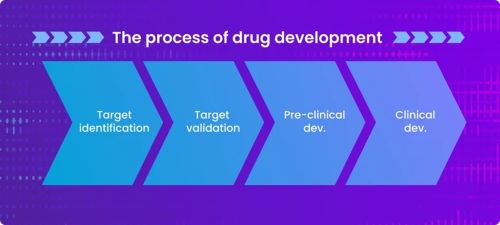Context
The quest for new drugs to combat diseases is a multifaceted and essential endeavor in healthcare. From identifying potential targets to developing effective treatments, the journey is complex and demands interdisciplinary collaboration. Recent advancements in drug-target discovery have outpaced developments in drug development, underscoring the importance of tools and expertise required for the latter stage of the process. These include molecular docking simulations, chemical libraries, and collaborations between institutes and industries. Despite progress, the need for new drugs, particularly in combating antimicrobial resistance, remains urgent.
Understanding the Drug Discovery Process
Drug discovery typically commences with the identification of potential targets for intervention. Recent research conducted at a research center exemplifies this approach. One group focuses on understanding the biology of bacteria, while another investigates the growth mechanisms of a malaria parasite. By studying these organisms at a molecular level, specific enzymes crucial for their survival were identified, which could serve as targets for new drugs.
The next step involves finding molecules that can inhibit these target enzymes. Assays are developed to test the efficacy of potential drug molecules, while researchers investigate the structures of their target enzymes. However, determining the structures of these enzymes presents challenges, particularly for large molecules comprised of multiple proteins. Consequently, scientists often rely on computational techniques such as molecular docking simulations to predict how potential drug molecules interact with their targets.
Tools and Techniques in Drug Discovery
Structural biology plays a crucial role in drug discovery by providing insights into the three-dimensional structures of target molecules. While some protein structures may be available in databases, others require computational methods to infer their structures based on homologous proteins. Molecular docking simulations then allow researchers to screen chemical libraries for molecules that bind effectively to target proteins. These libraries include approved drugs with known safety profiles as well as compounds synthesized or identified for specific diseases.
Artificial intelligence (AI) has emerged as a valuable tool in drug discovery, capable of predicting the structures of potential drug molecules and optimizing existing compounds. By leveraging AI-driven computational platforms, researchers can expedite the process of identifying lead compounds for further development. Additionally, collaborations between academia and industry facilitate the synthesis and testing of potential drug candidates, leveraging the expertise of both sectors.
Challenges and Opportunities
Despite advancements in technology and collaboration, drug discovery remains a challenging endeavor. Testing potential drug candidates for safety and efficacy requires rigorous experimentation, from cell culture models to animal studies and eventually clinical trials. This process is resource-intensive and subject to strict regulatory oversight, necessitating careful coordination between researchers, regulatory agencies, and pharmaceutical companies.
However, the road to drug discovery also presents opportunities for innovation and collaboration. Startups and contract research labs play a vital role in conducting preclinical studies and providing specialized expertise. Moreover, the global research community is increasingly focused on addressing local health challenges, such as malaria and tuberculosis in South Asia. By leveraging regional expertise and resources, researchers can accelerate the pace of drug discovery and bring much-needed treatments to those in need.
Conclusion
In conclusion, drug discovery is a multifaceted process that demands collaboration across disciplines and sectors. From identifying potential targets to testing and developing new treatments, each step presents its own challenges and opportunities. Advances in technology, including computational modeling and artificial intelligence, have revolutionized the drug discovery process, enabling researchers to expedite the identification of potential drug candidates. However, addressing the global health challenges posed by antimicrobial resistance and other diseases requires continued innovation, investment, and collaboration. By working together, researchers can accelerate the pace of drug discovery and improve health outcomes for millions around the world.
|
Probable Questions for UPSC Mains Exam 1. Discuss the role of interdisciplinary collaboration in accelerating the drug discovery process, with reference to recent advancements in molecular biology and computational techniques. How can partnerships between academia, industry, and regulatory agencies enhance the efficiency of drug development efforts?(10 marks, 150 words) 2. Antimicrobial resistance poses a significant global health threat, necessitating the discovery of novel drugs to combat infectious diseases. Analyze the challenges and opportunities associated with identifying and validating potential drug targets, and propose strategies to expedite the translation of scientific discoveries into effective treatments for antimicrobial-resistant pathogens.(15 marks, 250 words) |
Source – The Hindu








